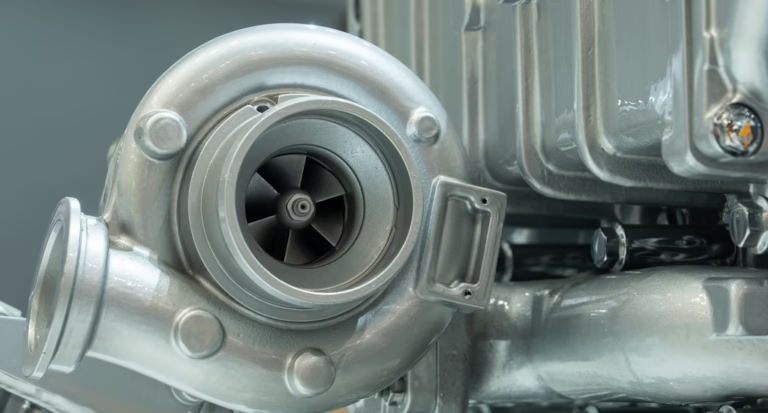Adding a turbocharger to your truck can be a great idea—if you go about it the right way. In this guide to turbocharging your truck, we’ll explain what to know before you do it, including the role of a turbocharger, the different types available, and more.
A Turbocharger’s Role in Your Truck
First, truck drivers should know what a turbocharger is and what it can do for their vehicle. A turbocharger is a device that forces more air into your engine’s combustion chamber, which helps it generate more power. It operates by utilizing the exhaust gas your engine produces to spin a turbine that compresses the incoming air.
This process allows your engine to burn more fuel and create more energy, increasing horsepower and torque. A lack of power is a common problem for diesel engines, and installing a turbocharger is an effective solution.
The Benefits of Installing a Turbocharger in Your Truck
Installing a turbocharger can offer several compelling benefits, with the most noticeable being the power boost. Turbocharging allows your engine to achieve higher performance without a larger, heavier engine. This means improving your truck’s speed and horsepower without sacrificing engine space.
Another advantage for truck drivers is it provides greater fuel efficiency. Since the turbocharger utilizes wasted exhaust gases, your engine can achieve more output with less input, reducing fuel consumption in many situations.
Which Turbocharger Is Ideal for Your Vehicle
If you’re unfamiliar with turbochargers, it’s important to note they’re not one-size-fits-all. There are many common kinds of turbochargers for trucks, and your choice depends on your truck’s engine size, model, and intended use.
Start by considering your truck’s specifications. Consult your owner’s manual, or speak with a professional to ensure compatibility with your engine’s configuration. For daily drivers who want moderate power boosts, smaller turbochargers are typically ideal because they generate less lag. For those using their trucks for heavy-duty applications, a larger turbocharger can provide the extra horsepower and torque needed to manage demanding conditions.
DIY Installation for Truck Turbochargers
If you’re worried about the expense of professional installation, you could install it yourself if you feel comfortable and have the necessary mechanical skills. Before starting, gather all the necessary tools and parts, review your truck’s user manual, and follow the manufacturer’s instructions closely.
The process involves removing engine components like the manifold and exhaust, so ensure you have enough workspace. You’ll need to properly secure the turbocharger and connect the oil and coolant lines to avoid future issues. If you’re unsure or inexperienced, it’s best to consult a professional mechanic and let them handle the job for your safety and the performance of your engine.
Get More From Your Truck With Turbocharging
We hope our guide to turbocharging your truck helps you better understand the key things to know before you do it. Adding a turbocharger can provide many advantages to your truck’s performance, provided it’s the right type and installed correctly. Think carefully about whether it’s right for your vehicle, and consult with professional mechanics to get an expert opinion.
